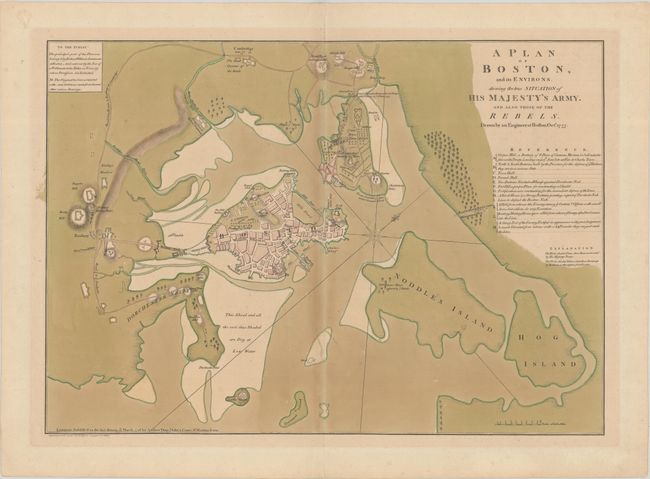Catalog Archive


Auction 181, Lot 260
Important Revolutionary War Plan from British Perspective in Full Contemporary Color
"A Plan of Boston, and Its Environs. Shewing the True Situation of His Majesty's Army. And Also Those of the Rebels. Drawn by an Engineer at Boston. Octr. 1775", Dury, Andrew

Subject: Boston, Massachusetts
Period: 1776 (dated)
Publication:
Color: Hand Color
Size:
25.4 x 18 inches
64.5 x 45.7 cm
Download High Resolution Image
(or just click on image to launch the Zoom viewer)
(or just click on image to launch the Zoom viewer)